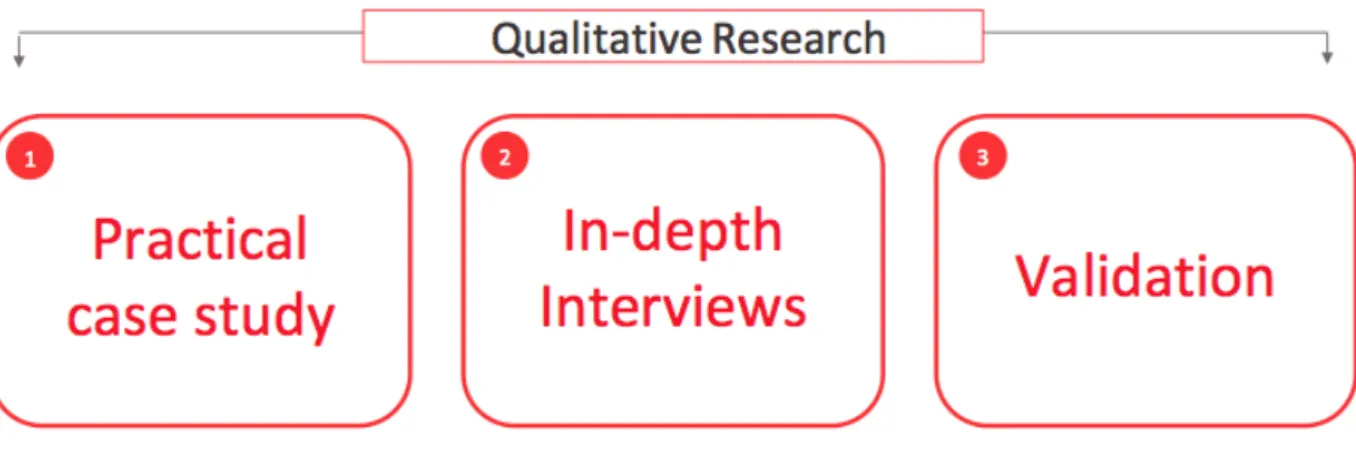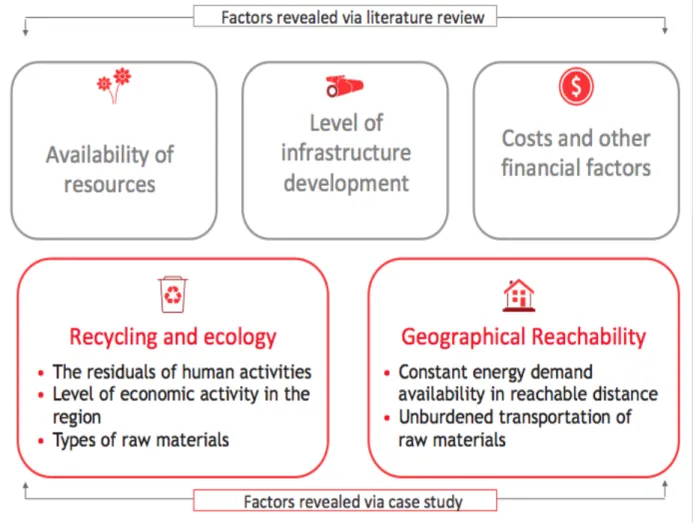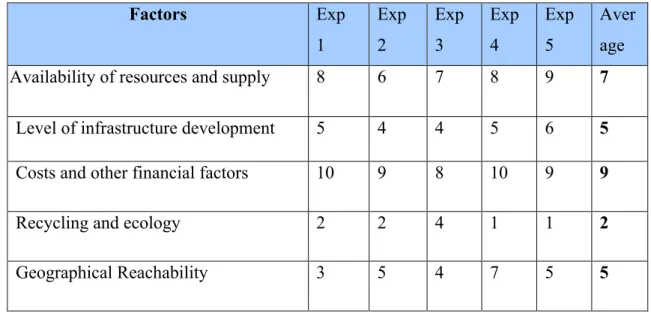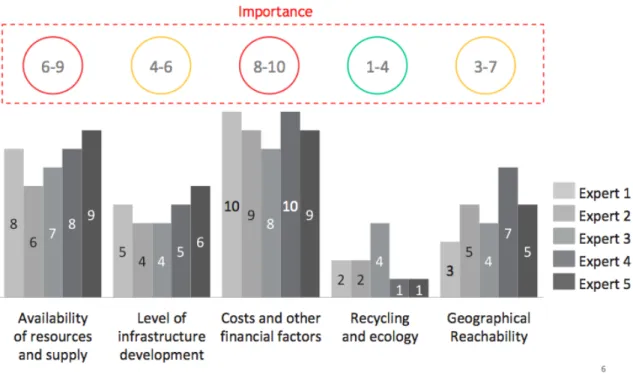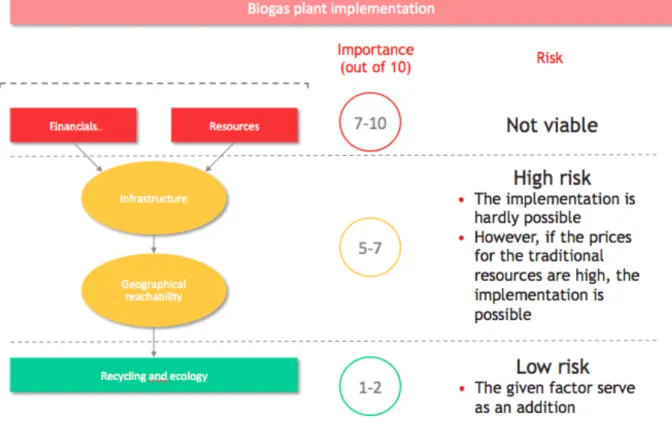The first chapter contains the observations of the literature on the concept of sustainable energy with an emphasis on biogas energy and the main details. The relevance of this research from the theoretical and practical application is the analysis of the feasibility of the implementation of renewable energy and the decision-making process on ways of implementation in the near future.
THE STATE-OF-THE-ART IN SUSTAINABLE ENERGY AND STRATEGIC
- Sustainable Energy Overview
- Biogas Overview
- Factors of bioenergy implementation: macroview
- Availability of resources and supply
- Level of infrastructure development
- Costs and other financial factors
- Strategy implementation in energy
- Summary
The limiting factor in the development of this energy source is the seasonality of crop growth. There are no specific guidelines for the organization of strategy implementation (Pramudita, Christoper Dewangga, 2016).
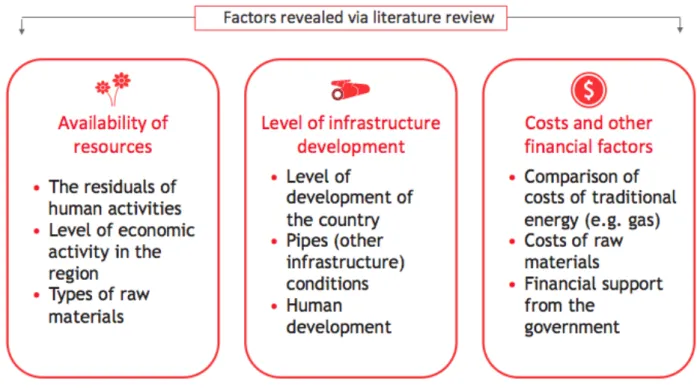
METHODOLOGY
- Description of methodology. Methods of study
- Sample selection
- Data Collection
- Evaluation criteria and validity
- Limitations of study
- Conclusion
This research is focused on the approach given to explore and collect data on the current state of the situation in the implementation of biogas technologies. The details of the situation, reasoning, motivation and subjective meanings are highlighted through the case study (Saunders, 2009). The singularity of each case and the understanding of the complex problem serves as the main goal.
As a result of the interviews, the description of the activities was obtained, as well as the opinions of experts on the factors found during the literature search. This method allows us to collect more detailed contextual data for theory analysis using real data. The first phases of the analysis are case studies on the general experience of companies working with biogas, as well as their strategies for introducing biogas methods.
Because the result of the research is the implementation of a corresponding gap between reality and theory.
RESEARCH FINDINGS
Example Case study: Bio En (Croatia)
The end product of biogas production is also the biomass that remains after the anaerobic digestion of organic material – digestate. Another important side-product of biogas production is manure (liquid cow manure) supplied by livestock farmers and farmers in the region. In the production of biogas by means of anaerobic digestion, the substrates are also used in addition to the raw material.
Due to its favorable properties and proximity to the supplier, silage is used as a substrate for biogas production in a biogas plant. During plant production, this department will provide continuous support to the cooperators in the development of processing technology. The main goal of the department is to ensure uninterrupted technical and managerial work with maximum capacity of all plants.
In the future, the department will offer its services to other companies in the region, and not only to the energy companies owned by Bio En.
Other practical case studies analysis
As a machine seller, the company usually provides the desired technical requirements that the customer must follow, and based on the customer's agreement, the company can give discounts for emergency services. Most of the specifications are related to the quality of the raw material that is processed by the engine. Agreement for the purchase of chemicals, which are injected into clean biomass, from the trusted vendor list.
The deviation from the price for the client can amount to 50% of the total compensation. From these insights we can conclude that the quality of the raw material plays an essential role in the management of the biogas plant. All factors found during the practical case study are analyzed and validated by experts during the interview process.
Interview analysis
Optimization is the method of discovering the satisfactory way of using resources, at the same time not violating any of the constraints that have been imposed. The biogas plant is a complicated system that requires many side processes to support operation. In reality, most of the constant consumers are households, so the biogas plant should be built not far from the place of consumption.
Since the most common production capacity of the biogas plant is usually enough to feed the village population, it is desirable to have the plant nearby. The raw material supply to the biogas plant should be of good quality, as it can cause damage to the bioengine and lead to financial losses for the company. Therefore, one of the essential needs of the biogas plant is the availability of such laboratories with highly trained biologists in the area.
One of our basic assumptions when we give a guarantee to a biomotor user is the availability of regular biological checks of the raw materials.”
Results
It thus helps to distinguish the most influential factors that corporations consider regarding the implementation of biogas. Five experts participated in the interview process; all the interviewed experts are decision makers in their function. The figures within Table 3 and Figure 5 show that the manager agreed that this specific issue is critical and is vital in the decision-making method for biogas implementation.
Each expert was also asked to rank the importance of given factors from 1 to 10 to identify the importance of each factor. All the managers indicated that resources and costs are the most important parts influencing the process of biogas implementation. Experts believe that efficient integration of biogas plant into the existing infrastructure is also important.
The correlation of the factors is the biggest challenge as all the factors together give a broad view on the implementation technique.
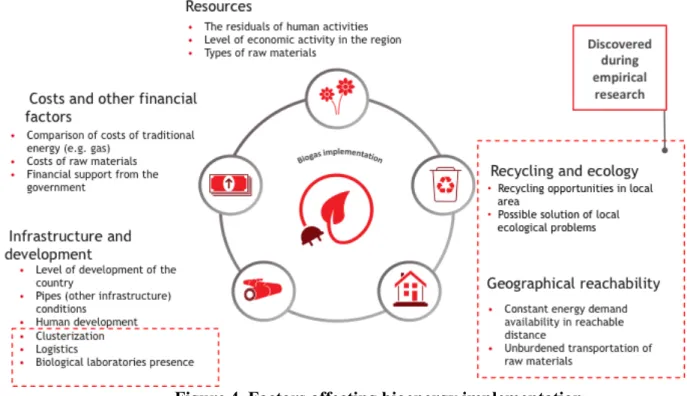
Application of factors in case analysis of Bio En
Most of the farmers have livestock (cows, sheep and pigs), which naturally produce the material for the biomass. The cost of natural gas in Croatia is approx. 90 EUR/mWh, while the costs of biogas production are at the level of 130 EUR/mWh. However, as Croatia is not a natural gas exporter, the country is highly dependent on gas prices, which are expected to increase in the future.
For this reason, the EU introduces a feed-in subsidy covering up to 50% of energy generation. Level of development According to Logistics Performance Index (LDI), Croatia is in the top 50 countries with the best infrastructure. Recycling and ecology Before the installation of the plant, all the waste from farming activities was not recycled and farmers had to deal with transport issues themselves.
The introduction of biogas plants allowed the farmers to solve this problem, as the operating company takes on all the logistics and also pays the farmers to have their waste.
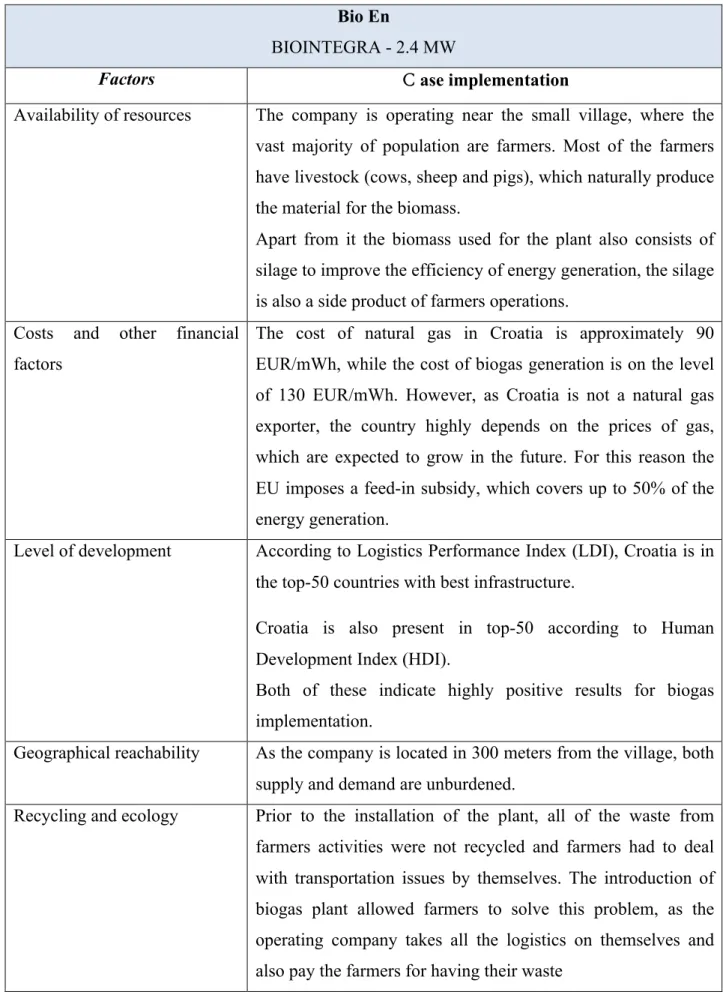
Managerial Implications
34;Strategic management of residential electric services in the competition market: Demand-oriented perspective." Energy &. 34;The effects of employee motivation, social interaction and knowledge management strategy on KM implementation level." Knowledge Management Research & Practice 9, no. 34;Exploring Sustainable Energy Economics: Net Metering, Price Design, and Consumer Behavior.” Current Sustainable/Renewable Energy Reports 4, no.
34; Long-term Diffusion Factors of Technological Development: An Evolutionary Model and Case Study." Technological Forecasting And Social Change 52, No. 2017. "An Analysis of Implementation Strategies in a School-Wide Vocabulary Intervention." Journal Of Education And Training Studies 5, No. Research Methods for Business Students The Power of Collaboration: Engaging All Parties in Renewable Energy Infrastructure Development." IEEE Power & Energy Magazine 11, no. 3).
34; DETERMINATION OF THE VALUES OF FINANCIAL SUBSIDIES IN RESPECT OF EXERGY QUALITY FOR BIOMASS-PRODUCED FUELS AND HEAT." Annals Of The Faculty Of Engineering Hunedoara - International Journal of Engineering 15 (2).
Case Study of Bio En (Full)
The location of Bio En's biogas plants is in rural areas (small villages), but with strong harvesting activities. This department will provide subcontractors during plant production with continuous support in the development of processing technology with the help of experts from the Faculty of Agriculture in Zagreb. In the future, the department will offer its services to other companies in the region, not just the energy companies owned by BioEn.
In addition to local government, sustainable energy producers are also supported by EU subsidiaries. In the program period 2014-2020, a total of 10,676 billion euros have been allocated to the Republic of Croatia from the European Structural and Investment Funds (ESI Funds). In addition, the company is in cooperation with business partners realized in the design and construction of plants, but also cooperates with the team of experts of various fields.
The general objective of EU funds is to develop and increase the competitiveness of small and medium-sized enterprises (SMEs) in the Republic of Croatia through investment in tangible and intangible assets by introducing new ICT solutions in business enterprises.
Case Study of Mosvodokanal
Taking into account the need to improve the reliability of power supply systems and the positive experience of operating a mini-TPP on the biogas of the Kuryanovsky treatment facilities, a decision was made to build a similar unit on the territory of the Luberetsky -to build a sewage treatment plant. Another promising area in the development of alternative energy in the sewage economy is the extraction of heat energy from sewage using heat pumps. The installation of a 55 kW heat pump at both sewage pumping stations is used for heating buildings.
Thus, for the first time in Russia, the heat of waste water, which has a temperature of around + 20 °C, is used to heat the building. In this particular case, biogas energy pooling is used as a side service used for ecological matters. This particular company manages natural waste from the city, which is recycled and serves as biomass for the production of biogas.
However, the main logic behind the biogas installment is the ability to recycle natural waste.
Case Study of Saveco
The deviation from the price for the customer can be up to 50% of the total compensation. From these insights we can conclude that the quality of the raw material plays an essential role in the management of the biogas plant.
Interview Mindmap
